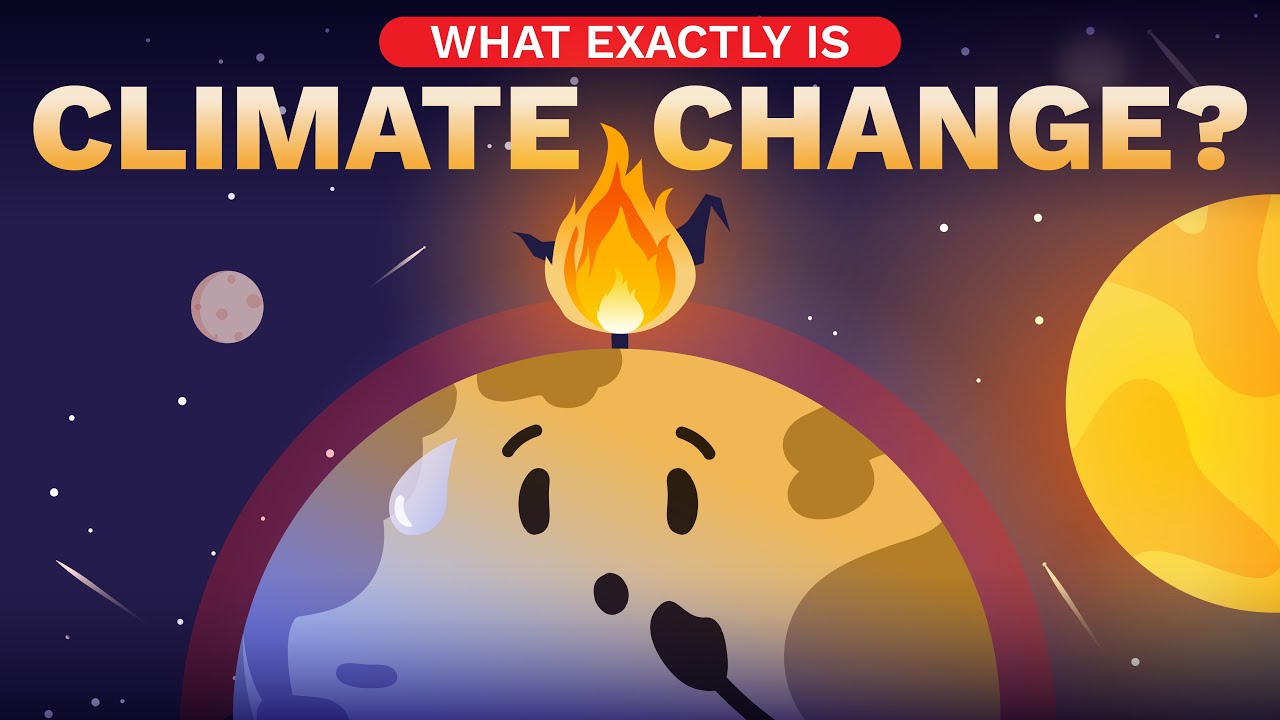The Future Of Energy | Climate Trailblazers: Reimagining Our Future
Summary
TLDRThe script addresses the urgent climate crisis, emphasizing the need for a new industrial revolution that decouples growth from emissions. It showcases innovative renewable energy solutions like floating solar farms in Singapore, geothermal energy advancements, and the potential of nuclear fusion. It also discusses energy efficiency in cooling systems and the role of green hydrogen and renewable diesel in decarbonizing heavy-duty transportation, urging a global shift towards sustainable energy.
Takeaways
- 🌍 Climate change is a global emergency, with human actions being the primary cause of the crisis.
- 🔥 Energy production is responsible for 80% of greenhouse gas emissions, making it a key area to address for climate action.
- ☀️ Solar power is one of the most accessible and cost-effective renewable energy sources, with innovative solutions like floating solar farms.
- 💡 The transition to renewable energy requires new industrial strategies that decouple growth from emissions.
- 🌿 Geothermal energy offers a reliable and consistent power source that can be deployed anywhere, including near cities.
- 🔬 Research into nuclear fusion presents a safer and more sustainable alternative to traditional nuclear fission.
- 🏭 The oil and gas industry's existing skills can be redeployed into the green energy sector, facilitating a smoother transition.
- 🏢 Centralized cooling systems can significantly increase energy efficiency in buildings, reducing carbon emissions.
- 🚗 Heavy-duty transportation like shipping and aviation present unique challenges for electrification, with alternatives like hydrogen fuel showing promise.
- 🌿 Renewable diesel and sustainable aviation fuel offer ways to decarbonize hard-to-abate sectors, although cost remains a barrier to widespread adoption.
- 🌱 The potential for a sustainable energy revolution is growing, with a combination of renewable energy, energy efficiency, and new liquid fuels.
Q & A
What is the main cause of climate change according to the script?
-The script indicates that human actions are the main cause of climate change, leading to global warming, rising sea levels, and more frequent and intense extreme weather.
What is the solution proposed for decoupling growth from emissions?
-The script suggests a new industrial revolution that uses clean energy and innovative strategies to reduce emissions while still allowing for economic growth.
How does the floating solar farm in Singapore contribute to reducing carbon emissions?
-The floating solar farm in Singapore can power up to 16,000 HDB flats and offset 32 kilotons of carbon emissions, which is equivalent to the energy needed to run the country's five local water treatment plants.
What is the potential of solar energy according to the script?
-The script highlights solar energy as one of the cheapest and most accessible sources of energy, with the potential to be integrated into various surfaces like buildings or vehicles, expanding its footprint.
How does geothermal energy work and what is an Everloop?
-Geothermal energy is harvested by drilling deep underground to access heat, which is then used to generate electricity. An Everloop is an innovation that uses a series of multilateral wellbores to circulate fluid, which is naturally heated by the earth, making geothermal energy more accessible and scalable.
What is the advantage of using professionals from the oil and gas industry in the green energy sector?
-The script mentions that professionals from the oil and gas industry can redeploy their existing skills in the green energy sector without needing retraining, contributing to the green revolution.
What is nuclear fusion and how does it differ from nuclear fission?
-Nuclear fusion is a process where two heavy forms of hydrogen are fused to form helium, releasing energy. Unlike nuclear fission, which has a bad reputation due to long-lasting waste and accidents like Fukushima and Chernobyl, fusion has different radiological hazards and is considered a safer and more sustainable source of power.
How does the centralized cooling system in Singapore's Marina Bay Financial District work?
-The centralized cooling system works by chilling water on rooftops using solar panels, then piping the chilled water to homes where it is used to create cool air, making cooling more efficient and reducing energy consumption.
What is green hydrogen and how is it produced?
-Green hydrogen is hydrogen created from renewable energy sources. It is produced using a solid oxide electrolyzer cell, which splits water into hydrogen using electrical power derived from renewables, resulting in no carbon or harmful toxins being emitted.
How does Nestle's renewable diesel differ from fossil diesel?
-Nestle's renewable diesel is made from waste and residues and releases 90% less greenhouse gas emissions over its life cycle compared to fossil diesel. It is a drop-in solution, fully compatible with diesel engines, and can help decarbonize heavy-duty transportation.
What is the challenge with sustainable aviation fuel (SAF) and how is it being addressed?
-SAF is currently more expensive than conventional jet fuel, which prevents wider adoption. Airlines like Singapore Airlines are trialing SAF and aiming to increase its use to achieve carbon neutrality by 2050, hoping to stimulate demand and lower costs.
Outlines

This section is available to paid users only. Please upgrade to access this part.
Upgrade NowMindmap

This section is available to paid users only. Please upgrade to access this part.
Upgrade NowKeywords

This section is available to paid users only. Please upgrade to access this part.
Upgrade NowHighlights

This section is available to paid users only. Please upgrade to access this part.
Upgrade NowTranscripts

This section is available to paid users only. Please upgrade to access this part.
Upgrade NowBrowse More Related Video

The Future of Materials | Climate Trailblazers: Reimagining Our Future

Cutting Greenhouse Gas Emissions to Zero I NOVA I PBS

A Brief History of CO2 Emissions

AR6 Synthesis Report: Climate Change 2023

Aquecimento global: 4 afirmações sobre as mudanças climáticas que a ciência desmentiu

Climate Change: How does it really work? | ClimateScience #1
5.0 / 5 (0 votes)